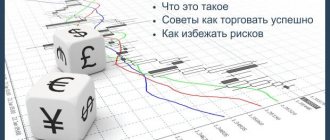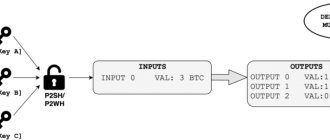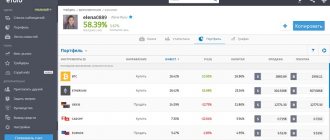Money Management: Basics
For traders, the goal of money management is to maximize profitability and minimize losses while maintaining their trading capital, while the overall goal of risk management is to ensure that various uncertain elements in trading do not hurt their chances of overall profitability.
Risk management in trading is a fairly broad concept. Essentially, risk management involves identifying, assessing and prioritizing all possible risks, and then engaging in the use of resources to minimize, control and monitor adverse events such as trading losses, as well as maximizing the impact of favorable events such as trading profits.
Money management should be a key part of your overall risk management strategy. As the name suggests, money management involves the consistent use of one or more strategic techniques to make the trader's risk capital produce the maximum profit for any losses that may occur. Money management revolves around the basic idea of maintaining a trading deposit and managing the numerous financial risks that your trading account is exposed to.
Risk management in trading
Why is risk management needed in trading? In order for the trader’s deposit to gradually grow upward over a long distance and for the drawdowns of the deposit to be relatively small. The fact is that in trading everything is based on probabilities and all a trader needs is to find a trading system with a positive mathematical expectation. With proper risk management using this trading system, the deposit will grow, and if not, it will fall, even despite the profitable system.
So what is risk management? Risk management is risk management ; in trading, a trader can only control risk and nothing else. Basically, traders lose not because they do not know how to trade, but because they do not manage risk, and some companies offer software with built-in risk management, where the trader can indicate the maximum daily risk in money and if the daily loss is higher than the one set in risk management, the program itself will close all open positions of the trader. You can purchase a risk manager here. Simply put, risk management is a set of rules that keep a trader in a profitable zone.
Rule 1: Risk a fixed amount on each trade .
Successful trading is about consistency, and in order to be at a solid profit over the long term, you must always risk a fixed percentage of your deposit in each trade, and preferably no more than 2%. Imagine that you have a trading system, which out of 100 completed transactions has 70 positive transactions and 30 negative ones. If a trader trades using this system and risks 1% of his capital in each trade, then his deposit will tend to rise over time. If in each transaction the risk is different, then it is not a fact that he will make money, for example, he made money in transactions with a 4% risk, but lost with a 10% risk and as a result he is in the red, and therefore it is necessary to follow this rule.
Rule 2. Diversification .
This rule is suitable for long-term investors and all you need to do is buy stocks from different sectors, and not just one or two sectors. It happens that some sector may be in a long decline and if an investor has invested everything in this sector, then his investments can bring losses for a long time, and if he distributed them over 5 sectors, then some sector would bring a loss, and others would be profitable and the average return would be positive. It’s not for nothing that they say that you can’t put all your eggs in one basket.
Rule 3. You need to have a fixed risk for the day/week/month .
Let’s say that the trading system used to bring good profits, but at one point it begins to constantly bring losses (perhaps the market has changed and the system has stopped working) and if the trader uses a fixed risk for the day/week/month, then the loss will be limited. Ordinary traders do not use this rule, but in vain. Sometimes the market goes into a stage of chaos, when it is impossible to predict the further movement of a financial instrument and the one who stops on time will get off with a slight fright, and the one who continues trading in chaos will lose a lot.
Risk control in trading
Successful trading usually means growing your trading account by managing your profits and losses wisely using a money management strategy.
Although wisdom usually only comes with experience, most traders tend to agree that profits made should usually exceed losses taken, which is the essence of the old adage that advises traders to "cut losses and let profits run."
Ideally, every trader wishing to grow their trading account should use a money management system in accordance with their trading plan, which objectively defines their goals. Of course, the actual details of each trading plan will vary depending on the personality, choices and preferences of each individual trader, but each trading plan should contain the money management techniques that the trader intends to use.
While some common risk management techniques can limit profits, using them as part of an overall money management plan is one of the best practices a trader can use to remain consistently profitable. After all, the financial market can be quite volatile at times, so having a detailed set of money management rules allows you to know in advance how you intend to size positions, limit losses, and take profits.
Money management rules
Incorporating money management techniques into your trading plan may require trial and error to see what works best for your trading strategy, account size, and risk tolerance.
Of course, any trading plan is only good if there is discipline, which the trader must constantly adhere to. Simply put, you must make sure that you plan your trading and only trade according to the plan.
Some of the more established money management guidelines include the following:
- Trade only with funds that you can afford to lose. Since traders usually experience emotional stress when losing money they need for vital things like food, shelter, the best rule of thumb is to only trade with risk capital. This means that you should only trade money that you can safely risk, as trading could result in the complete loss of your trading account. This key money management principle will help you avoid the emotional stress of losses incurred in your trading account and will allow you to better assess situations and think more strategically, which should significantly improve your overall trading performance.
- Evaluate your risk/reward ratio before trading. Before entering into any trade, you need to determine what reward you think you can expect from the trade and how much risk you are willing to accept to achieve that reward. Appropriate risk reward ratios may vary among traders with different risk tolerances and trading criteria, and will typically be included in a comprehensive trading plan. For example, some active traders may use a 1:2 risk reward ratio. This means that they are willing to risk one unit of loss in order to achieve the two units of profit they expect from the trade. On the other hand, more conservative traders may expect a potential trade to have a 1:3 risk to reward ratio. The basic idea in establishing an appropriate risk-to-risk ratio to use when trading is to filter out less attractive trades so that you only risk your trading account capital when better trading opportunities arise.
- Select the appropriate position size. Traders should set strict rules for the appropriate amount to trade based on their account size. This helps protect existing funds in their account from unexpected trading losses. Some traders prefer to define their trade amounts as a percentage of the amount of funds remaining in their trading account. Other traders may use the expected risk reward ratio of a trade to determine what position size they should take. Some traders may trade a fixed amount or number of lots. All of these position sizing strategies can be used effectively to manage your money, so pick one and apply it consistently.
- Avoid risking your entire capital at any given time. Many traders choose to keep the majority of the funds in their trading account in reserve so that they can recover more quickly from any significant losses, rather than putting all of their trading capital at risk at once. For example, a trader may not risk more than ten percent of his trading capital at one time across all of his open positions. This way, even if they experience a ten percent drawdown of funds at risk, they still have ninety percent of funds left in the trading account. Putting a significant percentage of your account at risk can make it nearly impossible to recover your funds in the event of a loss.
- Know when to exit a trade before you enter it. The analysis performed before entering a trade should give the trader a clear idea of where he expects the market to move so that he can profit from the trade, as well as where he could cut his losses in the event of an unfavorable market. This key pre-trade analysis will allow the trader to set appropriate take profit and stop loss orders for each trade when they are in a more unemotional state. This important step in trade planning can really help traders stay disciplined. Some traders may also set a time limit on their trades, so that the trade is closed if the market does not move as expected within a certain period of time. All these decisions must be made in advance so that they can be followed consistently.
Money management tools
Many traders who have incorporated some of the money management techniques listed above into their trading plans may also be using or developing various risk management tools.
Although some online money management calculators in the market are widely available on the internet, traders who are familiar with using Microsoft Excel or other similar spreadsheet program can easily create their own software tools for this purpose and can customize them according with your specific trading needs.
For example, a typical money management calculator, which you can easily create in a spreadsheet, can help you determine what position size to take on a particular currency pair based on the amount of funds in your account and the amount of money or interest in your account.
Such a money management tool may have the following parameters as input:
- Your total portfolio size.
- What percentage of your trading are you willing to risk?
- The trading instrument you are going to trade.
- Whether you want to buy or sell.
- Estimated stop loss and take profit levels.
The calculator's output can then include the size of the position you should take as well as the number of pips you are risking.
Basic methods of money management in trading on the Forex Market.
Distribution of funds on each trade
In order to make money on Forex, you need to be able to correctly distribute your funds for each transaction. Therefore, you should calculate how much money will be required to complete each transaction so that the income from it is sufficient, and in case of failure, the damage is not too great. Knowing the right ways to manage money on the Forex exchange, you can significantly succeed in your endeavors. If you manage your capital without following any well-thought-out tactics, you risk losing your initial capital within a short period of time, because without determining the amount of risk and the corresponding calculations, you are playing in the market blindly.
TOP FOREX BROKERS
On the other hand, there is another way to manage money in Forex, which is to open a number of positions in different categories, for example, (euro/dollar and euro/pound) in the amount of the entire capital. If the auction closes positively, you can earn quite a lot thanks to this, but in case of failure, the damage will be quite noticeable, if not complete. Which is also a rather risky way to manage capital in the Forex market. Therefore, professionals recommend that each trader determine for himself the amount of money he can risk by opening a certain position. Such a policy in the financial market will in some way protect the player’s main capital.
Capital drawdown percentage limits
Also, instead of a certain amount, you can determine for yourself the percentage of your capital that you are willing to risk by opening new positions. This tactic is also aimed at reducing the risk of loss. When playing on the market, it is necessary to count wins and losses, which will allow you to create your own statistics, on the basis of which you can later make a financial forecast. Separately, it is worth saying a few words about this method of managing capital in the Forex market, such as the moving average method, i.e. The start for participation in positions or, conversely, its end is the moment of intersection of the moving averages of the capital curve. One of the main rules of this method is to start opening positions if the short curve is located above the long one, but otherwise you should not make sudden movements in the market and hide.
Some traders use the so-called “Pyramid” method to manage their capital. It is based on the fact that the player, under certain circumstances, consistently increases the size of the transaction, which was already concluded with the addition of a certain share of capital. But this is a rather risky method, and also not always honest. But in any case, regardless of the choice of method of capital management in the Forex market, they are valid only until the moment of opening a position.
Conclusion
As a result, competent distribution of capital, a clear calculation when planning the amount of funds in a transaction, will help to earn capital. Traders also need ways to manage capital on Forex in order not to give in to emotions and incur losses. At the same time, it should be noted that the effectiveness of each method of capital management in the Forex market is not clearly defined. In the end, it is worth adding that some professionals diversify risks when playing on the Forex market, i.e. they distribute their capital in various directions, which in the event of force majeure guarantees the preservation of part of the capital. Although this method is most suitable for larger players who have substantial capital at their disposal, which means it is not suitable for beginners.
TOP FOREX BROKERS
Similar articles:
New Year with a reliable forex broker - AMarkets: let's celebrate together!
What mistakes should you not make when starting to trade on the Forex market? Tips from FinmaxFX.
A detailed overview of technical analysis in effective Forex trading.
How can beginners start making money on Forex?
Forex brokers - briefly about who brokers are.
Chargeback or how to return money stolen by a pseudo-broker on Forex, binary options.
Total Page Visits: 203 – Today Page Visits: 1











